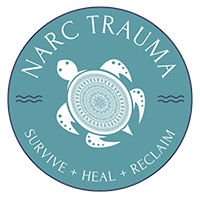The Vicious Circle: Understanding the Toxic Symbiosis of Narcissists and Their Enablers

By Brenda Stephens, Licensed Professional Clinical Counselor
The Vicious Circle: Understanding the Toxic Symbiosis of Narcissists and Their Enablers
In the complex dance of human relationships, few patterns are as destructive as the relationship between a narcissist and their enabler. This connection binds the two in a symbiotic (an interdependent relationship) and often devastating pattern of mutual reinforcement. The narcissist, with an insatiable appetite for attention and admiration, finds in the enabler an abundant source of the validation they crave. In turn, the enabler, frequently at the expense of their own needs, provides care and support that keeps this toxic cycle in motion.
The Narcissist’s Whirlpool of Control
At the heart of this dynamic is a narcissist’s grandiose self-image, one that demands constant feeding from the attention and subservience of those around them. Their traits are not just limiting; they are manipulative and controlling. It’s common for the narcissist to employ tactics of belittlement, criticism, and emotional manipulation to maintain a veneer of superiority. This is the lever they use to control the enabler, a control that is about maintaining their false sense of self rather than fostering a healthy, reciprocal relationship.
The Enabler’s Quiet Sacrifice
What of the enabler, then? What drives them to participate in this emotional charade? The enabler typically adopts a role that can only be likened to the backbone of the narcissist’s fragile self-esteem, often at the high price of their own emotional health. They may rationalize the narcissist’s behavior, shield it from the scrutiny of others, and submerge any negative reactions or emotions that could upset the precarious balance they’ve worked so hard to uphold.
The enabler’s behaviors include offering constant reassurance, dodging confrontations, and taking responsibility for the narcissist’s emotions and actions. They might also find themselves explaining, or worse, justifying the narcissist’s callous behavior to others, including their own children. This downplaying of relational cruelty is not just problematic; it’s harmful.
A Cycle of Destruction and Dependence
The relational engine of this duo creates a cycle where the narcissist’s ego is ceaselessly nourished while the enabler grinds down their independent identity into a shadowed existence serving another’s delusions of grandeur. This cycle becomes a whirlpool that draws both individuals into deeper levels of dysfunction. The enabler’s peacekeeping often comes at a steep price, cementing the narcissist’s toxic behaviors even further and making change increasingly difficult to achieve. It’s a twisted tango where the steps grow more destructive with every turn.
Breaking Free from the Loop
Breaking free from this destructive loop requires a fundamental shift in the powers at play. It involves the enabler recognizing their part in reinforcing the narcissist’s behavior. This might necessitate a painful process of self-reflection and setting firm boundaries or seeking support from a therapist, coach, or trusted friend who really understands these relationships to develop healthier coping strategies. Likewise, the narcissist would need a level of self-awareness and motivation to change that’s often contrary to their self-centric worldview and highly unlikely.
Recovery and healing from such a relationship is by no means an easy journey. It requires acknowledging that the symbiosis while appearing to meet certain emotional needs on the surface, is ultimately detrimental to the emotional well-being of both parties. Understanding the individual reasons for staying in such a relationship, whether it’s fear, self-esteem issues, a misguided sense of loyalty, or lack of awareness, is the first step toward healthier, more independent lives.
In Conclusion
The bond between a narcissist and their enabler is a stark reminder of how complex human emotions and needs can intertwine, leading to harmful patterns that can be challenging to resolve. While the reasons for these relationships are varied and deeply personal, one truth is consistent: they are inherently unhealthy. In the sinister shadows of such relationships, both individuals lose parts of themselves – the narcissist to their delusions, the enabler to their eroded sense of self. Recognizing this dynamic is crucial to breaking the cycle, healing, and ultimately moving toward healthier relationships where mutual respect and empathy are foundational, not sacrificial.







